This article includes a list of general references, but it lacks sufficient corresponding inline citations .(May 2013) |
Mimi Gross (born 1940) is a New York City born American artist.
This article includes a list of general references, but it lacks sufficient corresponding inline citations .(May 2013) |
Mimi Gross (born 1940) is a New York City born American artist.
Gross was born in New York City in 1940. She is the daughter of the sculptor Chaim Gross. She grew up on the Upper West Side of Manhattan among the artist community of her parents, which included Raphael Soyer, Moses Soyer, Arnold Newman, Max Weber and David Burliuk. From 1963-1976 she was married and collaborated with the artist Red Grooms. [1]
Mimi Gross's work spans from painting and drawing, films, mail art, book design, costume and set design, indoor and out of door installations, diorama and sculpture. Gross is known for her work in oil crayon, chalk pastel, and oil paint.
She began exhibiting in Provincetown, MA, an artist colony where she spent her summers with her family, in 1957, including a three-woman show at the Sun Gallery in 1958. She had a solo show at the Provincetown Art Association in 1997, as well as several solo shows in various galleries there.
She became well known for large 3-D constructions she made with her husband, [2] including City of Chicago (1967–68), Discount Store (1970–71), Astronauts on the Moon (1972) and Ruckus Manhattan (1975–76).
She has collaborated with Douglas Dunn, beginning with Foot Rules in 1978 and most recently tanks under trees (2008) with text by Anne Waldman and Cassations (2012). [3]
Gross serves on the faculty of MICA, Maryland Institute College of Art, and was the 2010/11 McMillan/Stewart Chair in Painting. [4]

Red Grooms is an American multimedia artist best known for his colorful pop-art constructions depicting frenetic scenes of modern urban life. Grooms was given the nickname "Red" by Dominic Falcone when he was starting out as a dishwasher at a restaurant in Provincetown and was studying with Hans Hofmann.

Isabel Bishop was an American painter and graphic artist. Bishop studied under Kenneth Hayes Miller at the Art Students League of New York, where she would later become an instructor. She was most notable for her scenes of everyday life in Manhattan, as a member of the loosely-defined ‘Fourteenth Street School’ of artists, grouped in that precinct. Union Square features prominently in her work, which mainly depicts female figures. Bishop’s paintings won the American Academy of Arts and Letters Award, among other distinctions.

Chaim Gross was an American sculptor and educator of Ukrainian Jewish origin. Gross studied and taught at the Educational Alliance Art School in New York City’s Lower Manhattan. He summered for many years in Provincetown.
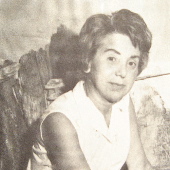
Jane Schenthal Frank was an American multidisciplinary artist, known as a painter, sculptor, mixed media artist, illustrator, and textile artist. Her landscape-like, mixed-media abstract paintings are included in public collections, including those of the Corcoran Gallery of Art, the Baltimore Museum of Art, and the Smithsonian American Art Museum. She studied with artists, Hans Hofmann and Norman Carlberg.

Mira Schor is an American artist, writer, editor, and educator, known for her contributions to critical discourse on the status of painting in contemporary art and culture as well as to feminist art history and criticism.
City Gallery was an art gallery in New York City that exhibited the work of contemporary artists in a loft space that was run collectively by a group of young avant-garde artists.
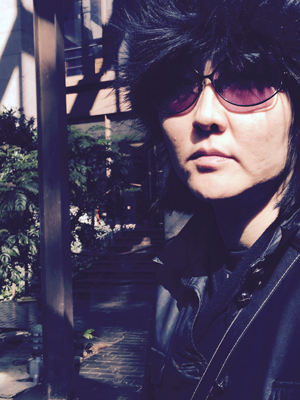
Mina Cheon is a Korean American new media artist, scholar, and educator. Since 1997, she has been living between Baltimore, New York, and Seoul.

Blanche Lazzell was an American painter, printmaker and designer. Known especially for her white-line woodcuts, she was an early modernist American artist, bringing elements of Cubism and abstraction into her art.
Peter Julian is an American artist best known for his Neo-expressionist paintings in the 1980s. His first major exhibition was in New York in 1982 at The New Museum as part of the museum’s annual “New Work/New York” series of exhibitions.

Karl Knaths was an American artist whose personal approach to the Cubist aesthetic led him to create paintings that, while abstract, contained readily identifiable subjects. In addition to the Cubist painters, his work shows influence by Paul Cézanne, Wassily Kandinsky, Utagawa Kuniyoshi, Paul Klee, Stuart Davis, and Agnes Weinrich. It is nonetheless, in use of heavy line, rendering of depth, disciplined treatment of color, and architecture of planes, distinctly his own.

Agnes Weinrich was an American visual artist. In the early twentieth century, she played a critical role in introducing cubist theory to American artists, collectors, and the general public and became one of the first American abstractionists. A life-long proponent of modernist art, she was an active participant in the art communities of Provincetown and New York. Early in her career, she traveled widely in Europe and spent extended periods studying in Paris and Berlin. She also studied art in Chicago, Provincetown, and New York. During most of her career, she worked in a Provincetown studio during the warm months and a Manhattan studio during the cold ones. Weinrich's easel work included oil paintings, watercolors, and pastels. She also made block prints and etchings and drew using pencil and crayon. Her paintings, prints, and drawings appeared in solo and group exhibitions throughout her career and she received favorable critical attention both during her life and after her death.

Bob Paul Kane was an American painter known for his gestural style, vibrant colors, and festive subject matter.
Jennifer Packer is a contemporary American painter and educator based in New York City. Packer's subject matter includes political portraits, interior scenes, and still life featuring contemporary Black American experiences. She paints portraits of contemporaries, funerary flower arrangements, and other subjects through close observation. Primarily working in oil paint, her style uses loose, improvisational brush strokes, and a limited color palette.
Lucy L'Engle (1889–1978) was an American painter who had an abstract style that ranged from Cubist to representational to purely abstract. Critics appreciated the discipline she showed in constructing a solid base on which these stylistic phases evolved. As one of them, Helen Appleton Read of the Brooklyn Daily Eagle, said in 1932, she was "at heart a painter with a painter's sensuous enjoyment of the medium itself." L'Engle herself at one time described her art as "a play of form and color" and at another said, "My pictures represent my feelings about experiences. They are experiments in modern art." Over the course of a long career she used studios in both Manhattan and Provincetown and exhibited in both commercial galleries and the annual shows held by two membership organizations, the New York Society of Women Artists and the Provincetown Art Association.

Didier William is a mixed-media painter originally from Port-au-Prince, Haiti. His work incorporates traditions in oil painting, acrylic, collage and printmaking to comment on intersections of identity and culture.
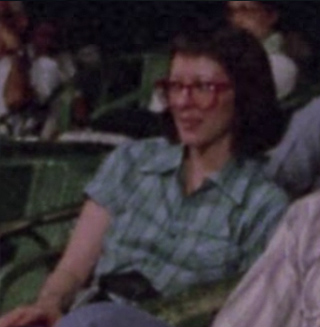
Candy P. Jernigan was an American multimedia artist, graphic designer, and set designer, instrumental in the avant-garde art scenes of Provincetown and New York City in the late 1970s and 1980s. She is best known for her vivid collages of found objects she described as "rejectamenta", presented in diagrams to absurd effect. Jernigan is also known for having designed the covers and jackets of dozens of music albums and books as a colleague of Paul Bacon.
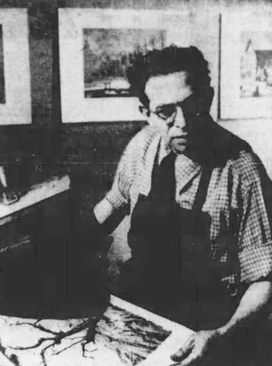
Harry Shokler (1896–1978) was a 20th-century American artist known for his oil paintings and screen prints. Using a realist approach that produced what one critic called an "exactness of rendition", he made colorful landscapes, cityscapes, and marine scenes as well as some notable portraits. He helped pioneer silkscreen printmaking in the 1930s and wrote an influential guide explaining and demonstrating the method. He gave few solo or small group exhibitions in commercial galleries and showed his work mainly from his own studio and in non-profit venues.
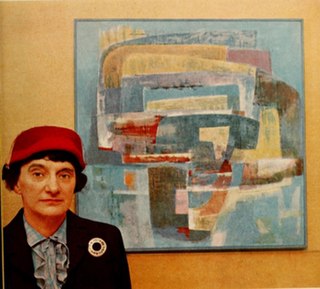
Shelby Shackelford (1899–1987) was an American artist who worked mainly within the art communities of Baltimore, Maryland, and Provincetown, Massachusetts. Her paintings, drawings, and prints were abstract, but not nonobjective. Each of them had, as she said, "a beginning in a visual experience". Early in her career, during a period when many in Baltimore were hostile to what locals called "advanced" trends in art, her paintings were stigmatized as "meaningless stuff". After helping to counteract these local prejudices, she embarked on a long period of experimentation in media and technique, maintaining, as she wrote in 1957, that painting was, "an adventure, a process of discovery for which there should be no end". Critics praised Shackelford for "refinement and sureness of approach and execution", "unusual and amusing arrangements of color and line", "taste and imagination", and "paintings [that] are abstract, well-constructed, with variety of forms, and outstanding color". In addition to making art, Shackelford taught art classes to children and adults, was an active participant in arts organizations, and both wrote and illustrated books that received extensive attention from book reviewers.
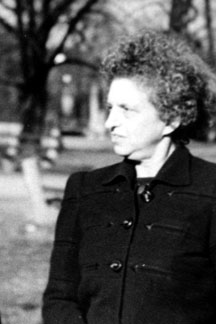
Dorothy Loeb (1877–1971) was an American artist known for her easel art, prints, and murals. She traveled widely in the United States, Mexico, and overseas, residing and working for the most part in Chicago, Manhattan, Eastern Massachusetts, and the State of Querétaro in Mexico. She was also a children's art teacher and proponent of progressive education. Having received training at the Art Institute of Chicago and the Art Students League of New York and having studied with artists in Munich and Paris, she adopted a variety of styles, ranging from representative to highly abstract, and worked in a variety of media including oil on canvas, oil on heavy coated paper, watercolor and ink on paper, and monotype printing. She exhibited in prominent museums including the Art Institute of Chicago, Provincetown Art Association and Museum, Worcester Art Museum, Wadsworth Atheneum, and Institute of Contemporary Art, Boston. She also showed a mural at the 1933 Chicago World's Fair. Most critics responded favorably to her work but not all. At one extreme, a reviewer called her work "the very best in the new art movement" while at the other, a critic said it was "dull, stiff, and lifeless".

Dorothy Lake Gregory (1893–1975) was an American artist best known for her work as a printmaker and illustrator of children's books. She took art classes in public school and at the age of fourteen began making drawings for a New York newspaper. She studied art in Paris in her late teens and thereafter took classes at Pratt Institute, the Art Students League of New York, and the Cape Cod School of Art. Her career as a professional artist began with her participation in an exhibition of paintings at the Art Students League in 1918. Her first book illustrations appeared three years later. She first showed prints in an exhibition held in 1935. She continued as artist, illustrator, and printmaker for most of the rest of her life employing throughout a different style for each of the three media. In 1956, a critic contrasted the "cubistic" painting style of that time with the book illustration style for which she was better known, saying he had heard gallery-goers incredulously remark, "But she can't be the same Dorothy Lake Gregory."